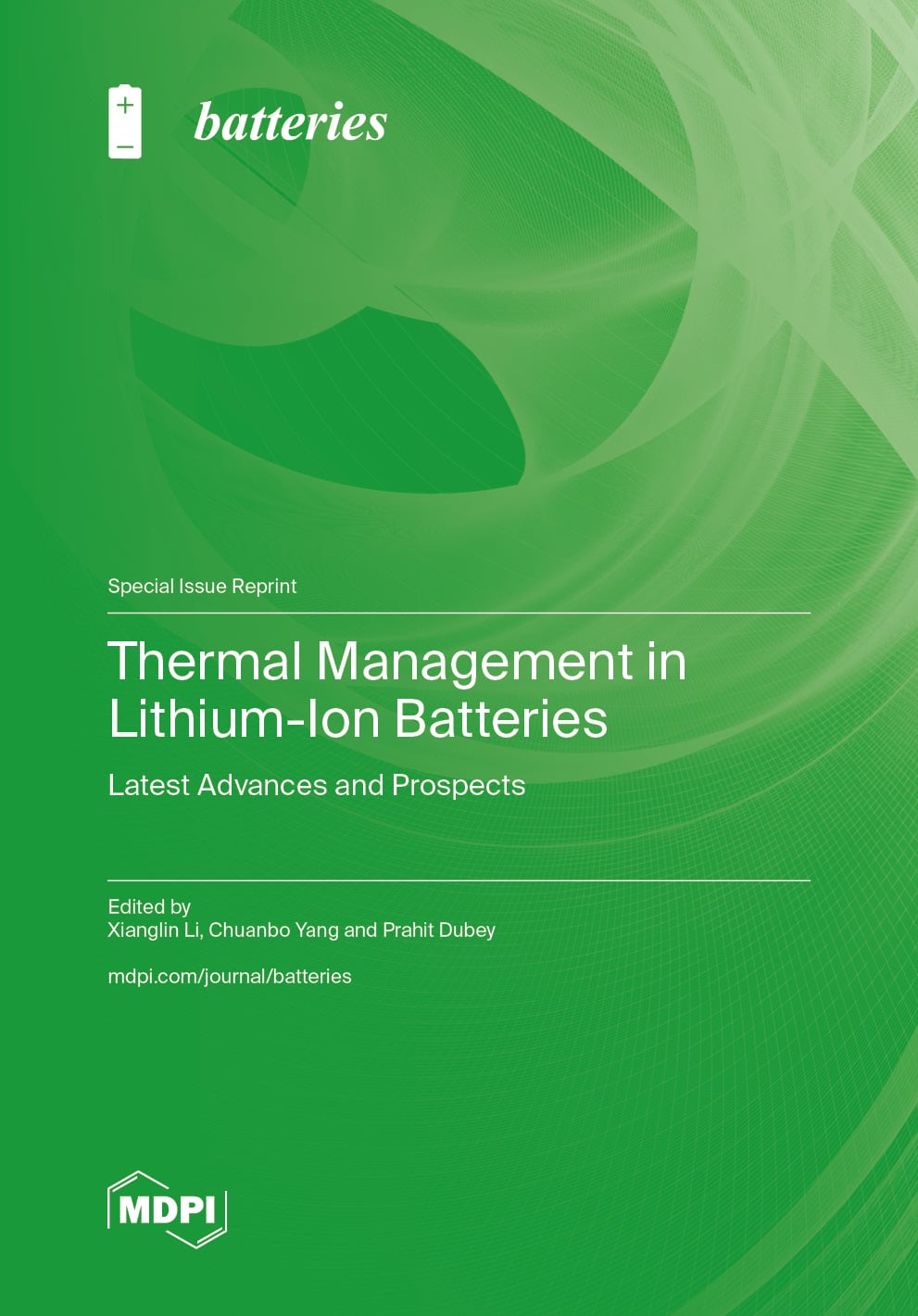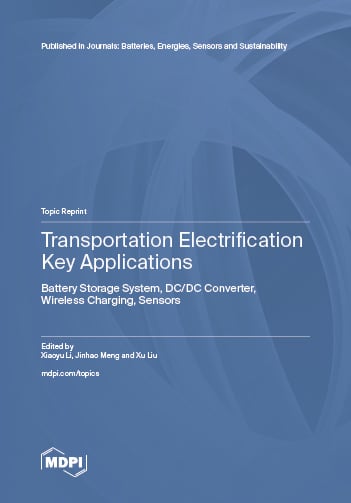- 4.8Impact Factor
- 6.6CiteScore
- 19 daysTime to First Decision
Batteries
Batteries is an international, peer-reviewed, open access journal on battery technology and materials published monthly online by MDPI.
The International Society for Porous Media (InterPore) is affiliated with Batteries and its members receive discounts on the article processing charges.
Quartile Ranking JCR - Q2 (Electrochemistry | Materials Science, Multidisciplinary | Energy and Fuels)
All Articles
News & Conferences
Issues
Open for Submission
Editor's Choice
Reprints of Collections

Reprint
Thermal Management in Lithium-Ion Batteries
Latest Advances and ProspectsEditors: Xianglin Li, Chuanbo Yang, Prahit Dubey

Reprint
Transportation Electrification Key Applications
Battery Storage System, DC/DC Converter, Wireless Charging, SensorsEditors: Xiaoyu Li, Jinhao Meng, Xu Liu


